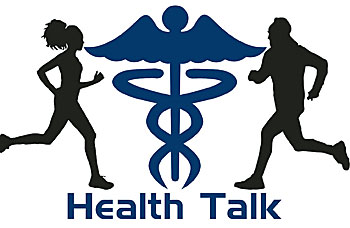 From the very earliest days of my education to become a Doctor of Chiropractic, I heard stories of people “throwing their backs out” while sneezing. Does this happen? And if so, is it preventable?
From the very earliest days of my education to become a Doctor of Chiropractic, I heard stories of people “throwing their backs out” while sneezing. Does this happen? And if so, is it preventable?
A little anatomy lesson first. The spine is composed of bones called vertebrae (vert-a-bray) and discs of softer material in between each vertebra. The discs are like jelly donuts: there is a tough outer ring and an inside of softer material, about the consistency of hardened toothpaste. When the discs age, the outer ring can dehydrate and become brittle, sometimes weakening so that the inner material can press against the outer ring and cause it to bulge. Most discs, when they begin to bulge slightly, the bulge is usually aimed to the back and one side of the disc or straight toward the back of the disc.
The technical term for this is postero-lateral bulge or posterior bulge. Not all disc bulges cause pain. In fact, a person can have a mild to moderate disc bulge and have zero symptoms until something happens to apply more pressure to that disc.
 There is an anatomical reason why most discs bulge backward. From the upper neck to the very bottom of the low back there is a ligament that runs behind every disc and vertebra, separating the discs and vertebrae from the spinal cord and actually providing a touch barrier at the back of the discs. It is called the posterior longitudinal ligament. The strange thing about this ligament is that it is widest in the neck where the discs are smaller and narrower in the low back where the discs are larger!
There is an anatomical reason why most discs bulge backward. From the upper neck to the very bottom of the low back there is a ligament that runs behind every disc and vertebra, separating the discs and vertebrae from the spinal cord and actually providing a touch barrier at the back of the discs. It is called the posterior longitudinal ligament. The strange thing about this ligament is that it is widest in the neck where the discs are smaller and narrower in the low back where the discs are larger!
The narrowness of the ligament in the low back makes the discs down there more vulnerable to posterior bulges. If the ligament were narrower at the neck and wider at the low back, that would make more sense, but that is not how humans are made. I am not a fan of that particular design feature, let me tell you.
 What has this got to do with a sneeze? When you sneeze, you temporarily increase intra-spinal pressure — the pressure inside the canal where the spinal cord and spinal nerve roots live. If you already have a mild disc bulge and you are in the unfortunate position of being bent over at the waist when you sneeze, that pressure on the disc increases when it is in the most vulnerable position possible. Bending forward enlarges the disc at the back, where a mild and non-symptomatic bulge can enlarge during the sneeze event. Ouch!
What has this got to do with a sneeze? When you sneeze, you temporarily increase intra-spinal pressure — the pressure inside the canal where the spinal cord and spinal nerve roots live. If you already have a mild disc bulge and you are in the unfortunate position of being bent over at the waist when you sneeze, that pressure on the disc increases when it is in the most vulnerable position possible. Bending forward enlarges the disc at the back, where a mild and non-symptomatic bulge can enlarge during the sneeze event. Ouch!
The solution: if you feel a sneeze coming on, make sure you are standing up perfectly straight before the sneeze happens. This might prevent the sneeze from resulting in back pain.
By the way, one question I ask my patients if I suspect a disc bulge is “Does your low back or leg pain increase when you cough, sneeze or move your bowels?” All three of those activities temporarily increase intra-spinal pressure.
•••
Dr. Gail Rosenberg practices non-force chiropractic in Soquel Village. To comment on this article, email her at [email protected]



